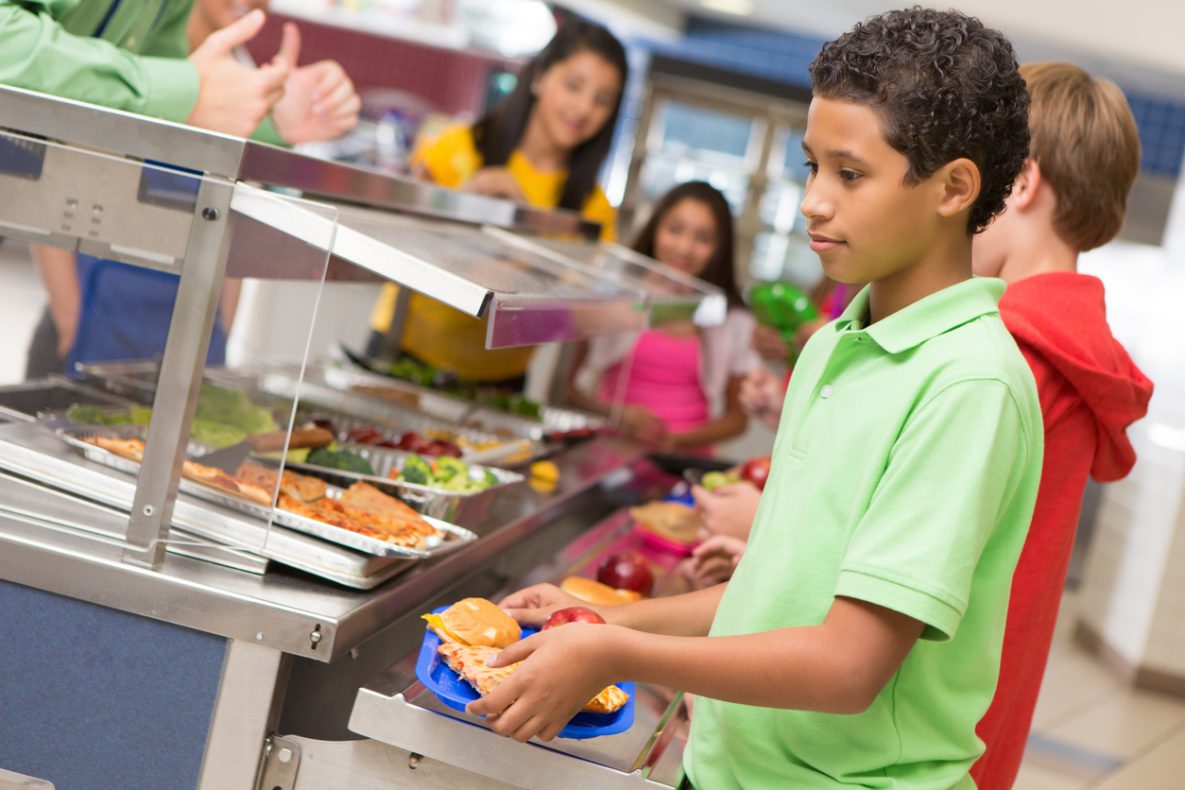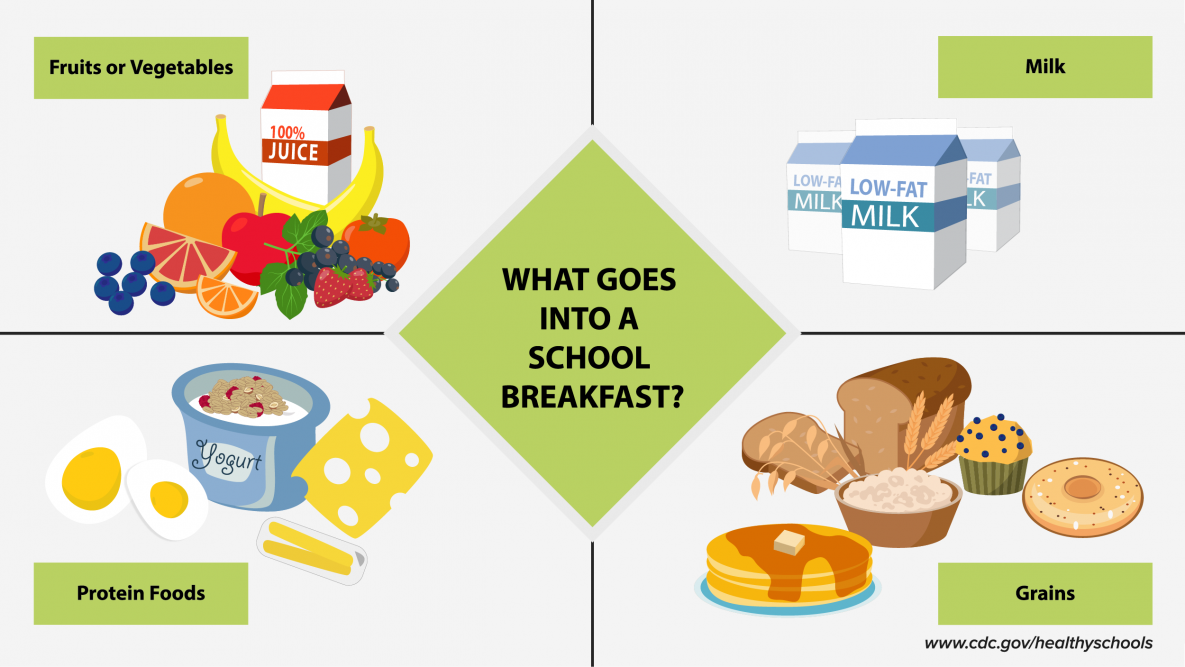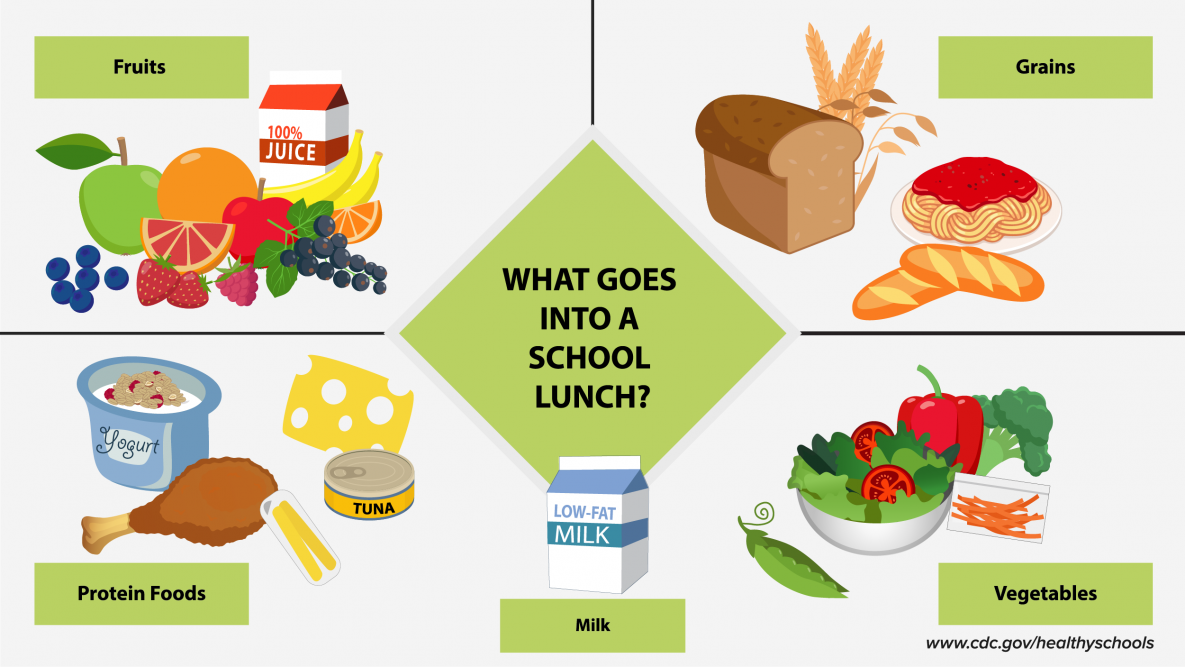What Parents Need to Know About School Meals

School meals are free for all children through June 30, 2022. Visit your school district’s website for more information.
Many schools provide students with access to meals through federal school meal programs, including the National School Lunch Program and the School Breakfast Program. In the past, all students were able to participate in school meal programs, and some were eligible to receive free or reduced-price meals. However, in response to the COVID-19 pandemic and concerns about food insecurity, the US Department of Agriculture (USDA) is providing free school meals for all students aged 18 and younger, regardless of household income, through June 30, 2022.
School Meals Benefit Everyone
How do school meals benefit students?
Research shows that students who participate in school meal programs consume more whole grains, milk, fruits, and vegetables during meal times and have better overall diet quality than those who do not participate.1,2 Eating breakfast at school is associated with better attendance rates, fewer missed school days, and better test scores.3–6

How do school meals benefit parents?
Parents are used to juggling multiple roles and responsibilities, but as a result of the COVID-19 pandemic, many parents are helping their children with virtual learning while also balancing responsibilities at work and at home. School meals can help parents save time with home meal prep and stretch the household budget. Parents can also feel good knowing their child will have good nutritious meals. School meals also provide opportunities for children to try new foods that parents might otherwise not think to serve at home.
How do school meals benefit schools?
Schools are reimbursed by USDA and state agencies for each healthy meal they provide. More meals served means more children getting nutritious foods and more funding for the school district’s nutrition program.
What else do parents need to know?
Whether students are in school for face-to-face instruction or doing virtual learning, school nutrition programs are working hard to safely get meals to students in several ways, including:

- Delivery on school bus routes.
- Contactless pickup at locations throughout the community.
- Grab-n-go options at school.
- Meals safely delivered to the classroom.
- Meals in the cafeteria.
Some programs may provide students with meal kits to assemble at home or pre-assembled meals that include whole grains, lean proteins, fruits, vegetables, and milk. There may also be options for you to receive multiple days of meals at once, saving you even more time. Visit your school district’s website for more information about options available in your community.
More information
- CDC Healthy Schools: School Meals
- To find meal sites near you, visit www.fns.usda.gov/meals4kids.
References
- Fox MK, Gearan E, Cabili C, et al. School Nutrition and Meal Cost Study, Final Report Volume 4: Student Participation, Satisfaction, Plate Waste, and Dietary Intakes.S. Department of Agriculture, Food and Nutrition Service, Office of Policy Support; 2019. https://fns-prod.azureedge.net/sites/default/files/resource-files/SNMCS-Volume4.pdf [PDF – 5.8MB]
- Kinderknecht K, Harris C, Jones-Smith J. Association of the Healthy, Hunger-Free Kids Act with dietary quality among children in the US National School Lunch Program. JAMA. 2020;324(4):359-368.
- Murphy JM, Pagano MR, Nachmani J, Sperling P, Kane S, Kleinman RR. The relationship of school breakfast to psychosocial and academic functioning. Arch Pediatr Adolesc Med. 1998;152:899–107.
- Murphy JM, Pagano M, Bishop SJ. Impact of a universally-free, in-classroom school breakfast program on achievement: results from the Abell Foundation’s Baltimore Breakfast Challenge Program. Boston, MA: Massachusetts General Hospital; 2001.
- Murphy JM, Drake JE, Weineke KM. Academics and Breakfast Connection Pilot: Final report on New York’s classroom breakfast project. Albany, NY: Nutrition Consortium of New York; 2005.
- Meyers A, Sampson A, Weitzman M, Rogers B, Kayne H. School Breakfast Program and school performance. Am J Dis Child, 1989;143:1234–9.
